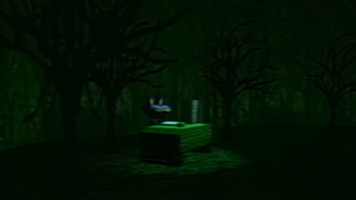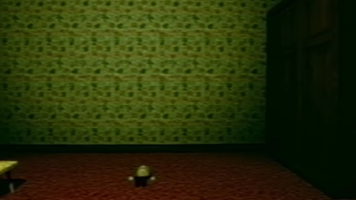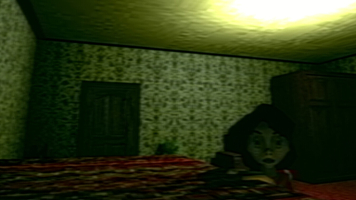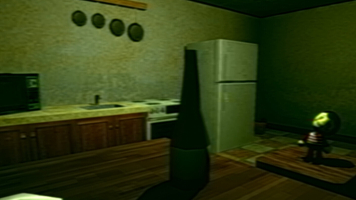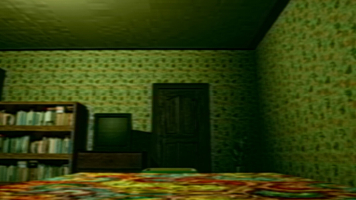I opened the game with a mix of curiosity and amusement. Bad Parenting 1: Mr. Red Face immediately captured my attention with its outlandish concept, drawing me into a unique narrative that defies conventional norms. From the moment I pressed start, I knew I was about to experience something different—an adventure that sat at the intersection of satire and unexpected gameplay. My initial trepidation gave way to excitement, as I was eager to explore how this game would challenge my perceptions of responsibility and authority in a whimsical, darkly humorous world.
Embracing the Satirical Premise
The theme of parenting, twisted into a satirical and surreal simulation, immediately struck me as refreshingly original. In this game, I found myself controlling a character that embodied the complexity and often absurd challenges of parental life. The narrative managed to strike a delicate balance between seriousness and farce, with moments that made me pause in reflection, as well as laugh outright at the ludicrous situations. Every interaction within the game became a commentary on the expectations and pressures of modern parenting, drawing parallels that resonated with my own experiences and perceptions.
The Dynamic Gameplay Experience
What truly set this game apart was its dynamic gameplay approach. Rather than following traditional linear paths, I was presented with a series of dilemmas and choices that echoed the unpredictable nature of raising children. The mechanics were not about following rigid instructions; instead, they encouraged creativity and experimentation. I enjoyed the freedom to explore different scenarios while grappling with consequences that were as humorous as they were enlightening. This level of interactivity made each play session unique, challenging me to adapt to ever-changing circumstances while keeping a sense of responsibility tethered to the absurdity of the narrative.
Interactivity and Control Nuances
The control system in Bad Parenting 1: Mr. Red Face is both intuitive and layered. As someone who appreciates games that offer accessible yet deep gameplay, I found the control scheme to be pleasantly surprising. Early in the game, the tutorials effectively acquainted me with movement, decision-making, and the underlying physics that govern my actions. The responsiveness of the controls, coupled with the game's forgiving yet challenging approach, added a layer of immersion that made every decision feel impactful. I particularly enjoyed how the mechanics allowed me to experiment with different strategies, encouraging a genuine sense of trial and improvement.
The Intricate World Design
Stepping deeper into the game, I discovered an environment meticulously designed to complement its whimsical theme. Each area within the game world feels alive, with distinct atmospheres and visual motifs that echo the absurdities of the game’s central narrative. I wandered through meticulously crafted backdrops, from quirky suburban landscapes to bizarre, exaggerated representations of modern life's chaos. The attention to detail in environmental storytelling was impressive, with subtle hints and visual cues that enriched the overall narrative. This design choice not only supported the satire but also involved me in an immersive experience where every corner held a new surprise.
Visual Aesthetics and Animation Style
The artistic style of Bad Parenting 1: Mr. Red Face left a lasting impression on me. Its animation is characterized by exaggerated gestures, vibrant colors, and a distinctive aesthetic that perfectly encapsulates the game's offbeat humor. The characters, with their expressive faces and over-the-top redesigns, added a layer of personality that made every interaction memorable. I was particularly drawn to the way the game used visual irony and symbolic imagery, turning everyday scenarios into a canvas for absurdity. The aesthetics of the game did more than just entertain; they created a bridge between the narrative’s emotional undertones and its playful exterior.
Soundscapes and Musical Appeal
As I progressed further, I found the game’s sound design to be a delightful accompaniment to its visual and narrative elements. The soundtrack oscillated between somber tunes that underscored the weight of parental responsibilities and whimsical, upbeat melodies that provided relief during lighter moments. Each sound effect, from the rustling of paper to the subtle ambient noises of a chaotic household, was meticulously crafted to enhance the immersion. I was often pleasantly surprised by how the audio elements managed to convey emotions without the need for dialogue, making the overall experience feel both intimate and expansive.
The Challenge of Balancing Responsibilities
The core gameplay loop revolves around maintaining balance in increasingly absurd situations. I encountered various mini-games and scenarios that tested my ability to juggle contradictory tasks. These challenges were never settled by a single strategy; instead, they pushed me to evaluate my priorities continuously. In moments that required decision-making under pressure, I was forced to rely on quick thinking and adaptability. This constant balancing act mirrored the unpredictable nature of real life, making every victory feel genuine and every misstep an opportunity to learn. The intellectual stimulation provided by this aspect of the game kept me engrossed, urging me to refine my approach with each level.
The Narrative Arc and Character Development
One of the game’s most compelling features is its narrative complexity. Throughout my journey, I observed a subtle evolution in the character’s persona that transcended mere gameplay mechanics. The story was punctuated by moments of introspection and growth, achieved through interactions that were both humorous and poignant. I found myself engaging more deeply with the protagonist as the layers of their personality unfolded, revealing vulnerabilities that challenged the stereotypical notion of parental authority. The interplay between personal ambition and societal expectation was rendered with both tactical wit and emotional depth, making the unfolding storyline an experience worth savoring.
Engaging Mini-Games and Puzzle Elements
While the freedom to make choices was a standout feature, the mini-games interspersed throughout the levels provided a welcome change of pace. Each of these segments was designed to test different facets of my problem-solving skills. Whether it was organizing a chaotic schedule or managing unforeseen household emergencies, the tasks were as entertaining as they were challenging. I appreciated the diversity in gameplay, as it prevented the main narrative from becoming monotonous. Instead, these segments served to reinforce the themes of unpredictability and resilience inherent in the game, urging me to think creatively and approach each scenario with fresh eyes.
Humorous Dialogues and Quirky Interactions
The dialogue in Bad Parenting 1: Mr. Red Face is a masterclass in balancing absurdity with insight. As I navigated through conversations with in-game characters, I was struck by the clever writing that interwove humor with elements of social commentary. The exchanges were witty, surprisingly reflective, and always delivered with impeccable timing. I found that even the most mundane interactions were elevated by the sharpness of the humor, which often provided unexpected commentary on the roles and expectations within family dynamics. These moments of levity contributed significantly to the overall charm of the game, making it a delight to engage with on multiple levels.
Subtle Social Commentary in Gameplay
What truly resonated with me was the way this game interlaced its humorous gameplay with layers of social commentary. I found it particularly fascinating how it addressed themes of authority, conformity, and rebellion in a household setting that was anything but ordinary. Each level felt like a chapter in a broader narrative that questioned societal norms and the inherent contradictions within familial roles. The game urged me to reflect on the nature of expectations—both self-imposed and externally dictated. This introspective quality, delivered through a medium that was at once entertaining and thought-provoking, resulted in a delightful tension that kept me engaged and reflective throughout the experience.
Adaptive Difficulty and Replay Value
The design of Bad Parenting 1: Mr. Red Face incorporates an adaptive difficulty system that adjusted to my playing style. I appreciated the way the challenges scaled based on my decisions and performance, ensuring that the learning curve was both manageable and rewarding. The system encouraged me to try different strategies with each playthrough, which enhanced the replay value immensely. I often found myself experimenting with unconventional approaches, eager to discover hidden outcomes and easter eggs that the game had cleverly tucked away for players who ventured off the beaten path. The result was a gameplay experience that felt fair, challenging, and consistently engaging no matter how many times I returned to it.
In-Game Humor and Subtle Easter Eggs
Throughout my journey, I was delighted by the plethora of subtle references and easter eggs embedded within the game's world. The developers clearly took great care to infuse layers of humor that rewarded attentive players with quirky surprises. I spent many moments pausing the game to admire the intricate details hidden in alleyways, backyards, and even within the digital clutter of the household. These discoveries were not only amusing but also served as a testament to the creative vision behind the game. They invited me to explore and interact with the environment in ways that felt both spontaneous and deeply satisfying, making every play session an adventure filled with personal discoveries.
Experimenting with Interaction Styles
One aspect that greatly appealed to me was the freedom to experiment with different interaction styles. Contrary to many conventional games where the protagonist follows a set path, Mr. Red Face offered a sandbox-like quality where my choices had lasting consequences. I recall moments where the game’s physics and interaction logic allowed for hilarious outcomes that I had never anticipated. Experimenting encouraged a mindset of playful curiosity, and I took full advantage of this by trying out unconventional sequences of action. Whether it was a subtle nudge of an in-game object or a significant decision that altered a storyline branch, every experiment taught me something new about the game's mechanics and narrative structure.
Reflections on the Emotional Spectrum
There were instances when I found myself genuinely touched by the emotional depth beneath the humorous exterior. Amidst the chaos and unpredictable scenarios, the game managed to weave in moments of sincere emotional reflection. These occurrences forced me to reconcile my own emotions with the absurdity on-screen, resulting in an unexpected emotional journey. I felt connected to the character's ongoing internal struggles, which were juxtaposed brilliantly against the backdrop of surreal in-game events. The emotional spectrum in Bad Parenting 1: Mr. Red Face was profound, offering both light-hearted amusement and contemplative interludes that enriched my overall experience.
Pros

- Distinctive satirical storyline that challenges conventional narratives
- Dynamic and adaptive gameplay that fosters creative decision-making
- Intricate environment design with subtle details that reward exploration
- Engaging soundscapes and a well-crafted musical score that enhance immersion
- Quirky character development and humorous dialogues that add emotional depth
- Multiple mini-games and puzzles that boost replay value and diversify the experience
Cons

- Occasional issues with control responsiveness during rapid sequences
- Some narrative choices and outcomes may feel ambiguous or inconsistent
- A few mini-game challenges can appear disproportionately difficult compared to the overall pace








